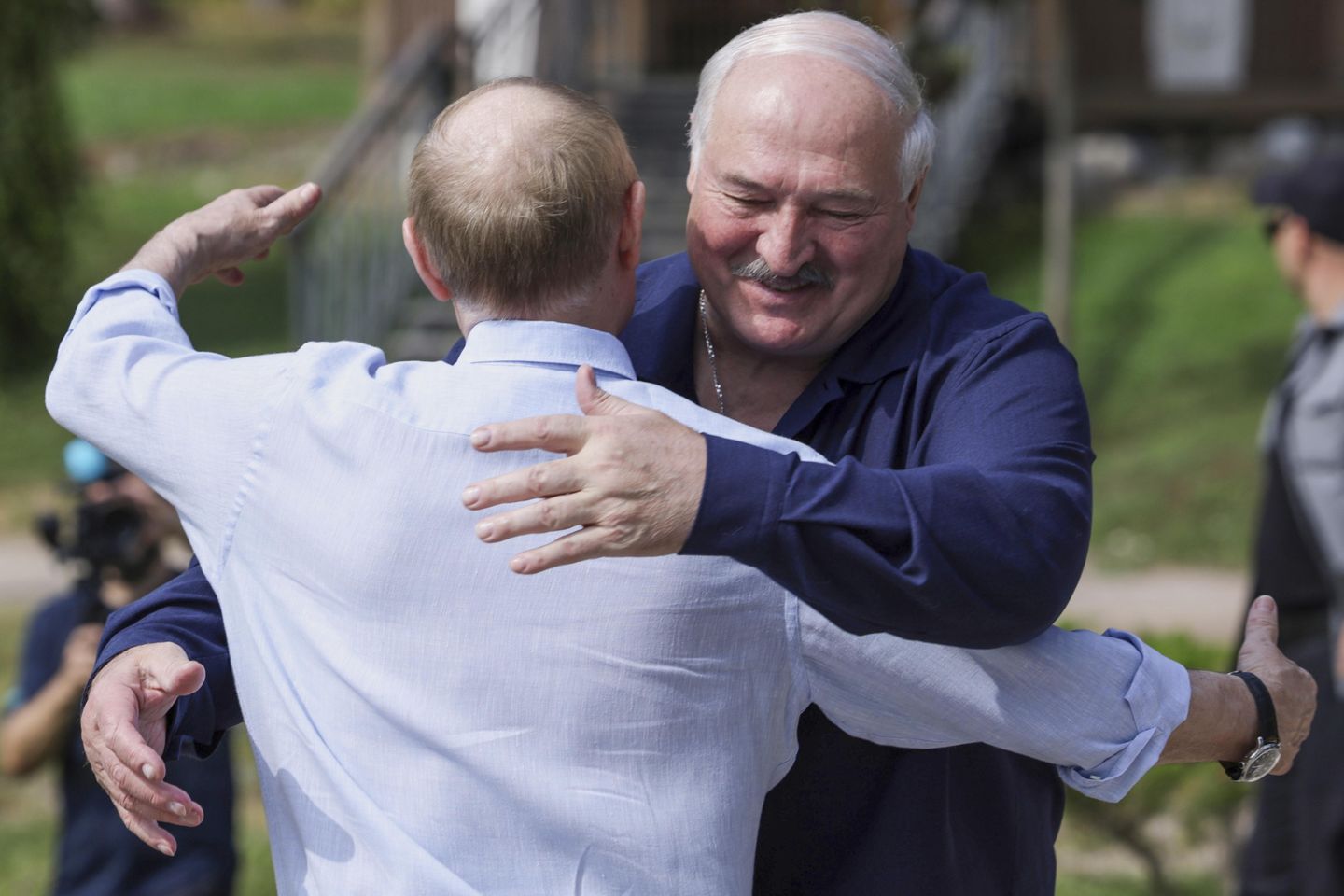
MOSCOW — President Vladimir Putin said Friday that Russia has started production of its newest hypersonic missiles and reaffirmed its plans to deploy them to ally Belarus later this year.
Sitting alongside Belarus President Alexander Lukashenko on Valaam Island near St. Petersburg, Putin said the military already has selected deployment sites in Belarus for the Oreshnik intermediate-range ballistic missile.
“Preparatory work is ongoing, and most likely we will be done with it before the year’s end,” Putin said, adding that the first series of Oreshniks and their systems have been produced and entered military service.
Russia first used the Oreshnik, which is Russian for “hazelnut tree,” against Ukraine in November, when it fired the experimental weapon at a factory in Dnipro that built missiles when Ukraine was part of the Soviet Union.
Putin has praised the Oreshnik’s capabilities, saying its multiple warheads that plunge to a target at speeds up to Mach 10 are immune to being intercepted and are so powerful that the use of several of them in one conventional strike could be as devastating as a nuclear attack.
He warned the West that Moscow could use it against Ukraine’s NATO allies who allowed Kyiv to use their longer-range missiles to strike inside Russia.
Russia’s missile forces chief has declared that Oreshnik, which can carry conventional or nuclear warheads, has a range allowing it to reach all of Europe.
Intermediate-range missiles can fly between 500 to 5,500 kilometers (310 to 3,400 miles). Such weapons were banned under a Soviet-era treaty that Washington and Moscow abandoned in 2019.
Last fall, Putin and Lukashenko signed a treaty giving Moscow’s security guarantees to Belarus, including the possible use of Russian nuclear weapons to help repel any aggression. The pact follows the Kremlin’s revision of its nuclear doctrine, which for the first time placed Belarus under the Russian nuclear umbrella amid tensions with the West over the conflict in Ukraine.
Lukashenko, who has ruled Belarus with an iron hand for over 30 years and has relied on Kremlin subsidies and support, allowed Russia to use his country’s territory to send troops into Ukraine in 2022 and to host some of its tactical nuclear weapons. Russia hasn’t disclosed how many such weapons were deployed, but Lukashenko said in December that his country currently has several dozen.
The deployment of tactical nuclear weapons to Belarus, which has a 1,084-kilometer (673-mile) border with Ukraine, would allow Russian aircraft and missiles to reach potential targets there more easily and quickly if Moscow decides to use them. It also extends Russia’s capability to target several NATO allies in Eastern and Central Europe.
The revamped nuclear doctrine that Putin signed last fall formally lowered the threshold for Russia’s use of its nuclear weapons. The document says Moscow could use nuclear weapons “in response to the use of nuclear and other types of weapons of mass destruction” against Russia or its allies, as well as “in the event of aggression” against Russia and Belarus with conventional weapons that threaten “their sovereignty and/or territorial integrity.”
___
The Associated Press receives support for nuclear security coverage from the Carnegie Corporation of New York and Outrider Foundation. The AP is solely responsible for all content.


![Former Bravo Star Charged After Violent Assault Using a Rock-Filled Sock in Tennessee Walmart [WATCH]](https://www.right2024.com/wp-content/uploads/2025/07/Former-Bravo-Star-Charged-After-Violent-Assault-Using-a-Rock-Filled-350x250.jpg)




![Karoline Leavitt Levels CNN's Kaitlan Collins and Other Legacy Media Reporters [WATCH]](https://www.right2024.com/wp-content/uploads/2025/07/Karoline-Leavitt-Levels-CNNs-Kaitlan-Collins-and-Other-Legacy-Media-350x250.jpg)
![Man Arrested After Screaming at Senators During Big Beautiful Bill Debate [WATCH]](https://www.right2024.com/wp-content/uploads/2025/06/Man-Arrested-After-Screaming-at-Senators-During-Big-Beautiful-Bill-350x250.jpg)

![Illegal Alien Walked Free After Decapitating Woman, Abusing Corpse for Weeks [WATCH]](https://www.right2024.com/wp-content/uploads/2025/07/1753013138_Illegal-Alien-Walked-Free-After-Decapitating-Woman-Abusing-Corpse-for-350x250.jpg)






